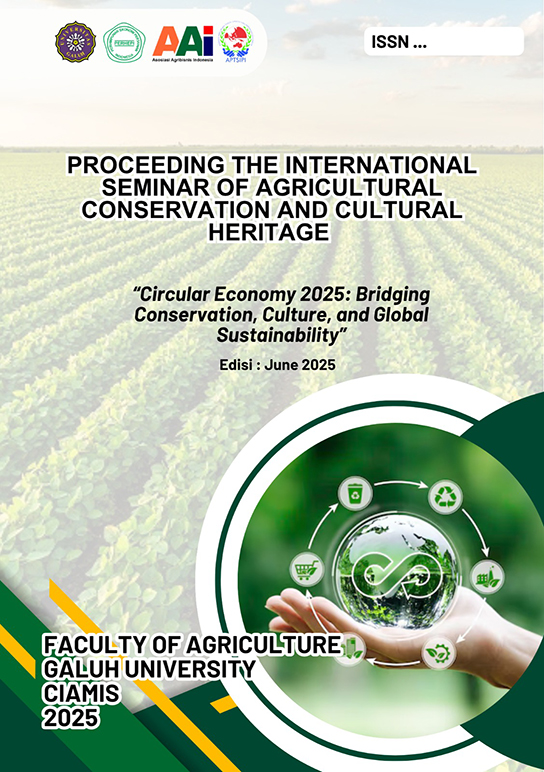INNOVATION ADOPTION OF GOOD FARMING PRACTICE IN SHEEP FARMING BUSINESS IN GEGERBITUNG DISTRICT, SUKABUMI REGENCY
Keywords:
Good Farming Practice; Innovation Adoption; Sheep Farming BusinessAbstract
Most of the people in Gegerbitung Subdistrict work as farmers and breeders. This study aimed to determine the level of Good Farming Practice (GFP) implementation as a form of innovation adoption in sheep farming in Gegerbitung Subdistrict, Sukabumi District. The method used was descriptive qualitative with primary data collection through questionnaires and interviews, and secondary data from literature. This study examined four aspects of GFP: facilities, production, environmental conservation, and supervision. The results showed that the implementation of GFP in the facilities and production aspects was quite good, with achievements of 71.82% and 76.06%, respectively. The environmental conservation aspect is still low at 41.67%, while the supervision aspect is quite good at 75.00%. Overall, the level of innovation adoption through the application of GFP in sheep farming in Gegerbitung Subdistrict reached 66.55%, which is classified as sufficient, but still needs improvement, especially in the aspects of environmental management and utilization of feed technology. This research is expected to be a reference for farmers and the government in increasing the productivity of sheep through a more optimal application of GFP.
References
1. B. K. Sukabumi, Types of Livestock Kind of Livestock (2023)
2. I. Yuniza, M. Sulystiati, and D. M. A. Mauludin, 1 (2023)
3. N. Kelompoktani, S. Raksa, and H. Abadi, (2022)
4. A. Theodoridis, S. Vouraki, E. Morin, L. R. Rupérez, C. Davis, and G. Arsenos, Animals 11, 1 (2021)
5. S. W. Purwanza, W. Aditya, M. Ainul, R. R. Yuniarti, K. H. Adrianus, S. Jan, Darwin, B. Atik, P. S. Siskha, F. Maya, L. K. R. N. Rambu, Amruddin, S. Gazi, H. Tati, B. T. Sentalia, D. P. Rento, and Rasinus, Quantitative, Qualitative, and Combination Research Methodology (2022)
6. Suggestion, Quantitative, qualitative and R&D research methodology (2020)
7. M. A. Kurniawan and G. P. Tengku, Semin. Soc. Sci. Eng. 599 (2021)
8. G. Gunawan, A. V. S. Hubeis, A. Fatchiya, and D. Susanto, Agrieconomics 8, 70 (2019)
9. D. Pinardi, A. Gunarto, and S. Santoso, J. Ilm. Breeder. Integrated 7, 251 (2019)
10. L. Purnamasari, S. Rahayu, and M. Baihaqi, J. Livest. Sci. Prod. 2, 56 (2018)
11. R. A. Lubis, J. Ilm. Mhs. Pertan. 2, 1 (2022)
12. R. Billyardi, Suhendar, and T. A. Endang, Agrokreatif J. Ilm. Service. To Masy. 2, 39 (2016)
13. A. Marzuki, E. Kustiawan, and F. E. A. Pratama, Pengabdi. Mass. Polije Proc. Ser. 4, 1 (2020)
14. Z. Fitrian, Jom FISIP 15, 1 (2016)
15. T. E. Susilorini, R. D. Wahyuni, and W. Nugroho, J. Pengabdi. To Masy. GREETINGS 6, 1 (2025)
16. H. S. P. Rahayu and Herawati, J. Penyul. 17, 228 (2021)


